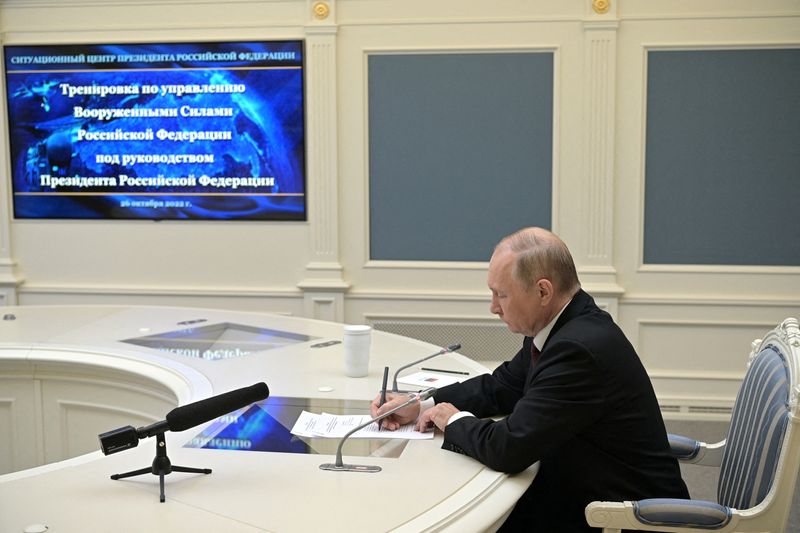MOSCOW (Reuters) – President Vladimir Putin on Thursday held out the possibility that Russia could resume nuclear testing for the first time in over three decades, withdrawing its ratification of a landmark test ban treaty.
How many nuclear weapons tests have there been, why were they stopped – and why would anyone start them again?
NUCLEAR AGE
The United States opened the nuclear era in July 1945 with the test of a 20-kiloton atomic bomb at Alamogordo, New Mexico, in July 1945, and then dropped atomic bombs on the Japanese cities of Hiroshima and Nagasaki in August 1945 to end World War Two.
The Soviet Union shocked the West by detonating its first nuclear bomb just four years later, in August 1949.
In the five decades between 1945 and the 1996 Comprehensive Nuclear Test-Ban Treaty (CTBT), over 2,000 nuclear tests were carried out, 1,032 of them by the United States and 715 of them by the Soviet Union, according to the United Nations.
Britain carried out 45 tests, France 210 and China 45.
Since the CTBT, 10 nuclear tests have taken place. India conducted two in 1998, Pakistan also two in 1998, and North Korea conducted tests in 2006, 2009, 2013, 2016 (twice) and 2017, according to the United Nations.
The United States last tested in 1992, China and France in 1996 and the Soviet Union in 1990. Russia, which inherited most of the Soviet nuclear arsenal, has never done so.
ENDING TESTING
Concern mounted about the impact of the tests – above ground, underground and underwater – on human health and the environment.
By limiting the Cold War bonanza of nuclear testing, advocates said, tensions could be reduced.
The Comprehensive Nuclear-Test Ban Treaty bans nuclear explosions by everyone, everywhere. It was signed by Russia in 1996 and ratified in 2000. The United States signed the treaty in 1996 but has not ratified it.
WHY WOULD YOU TEST AGAIN?
To gather information – or to send a signal.
Tests provide evidence of what any new nuclear weapon will do – and whether older weapons still work.
In 2020, the Washington Post reported that the administration of U.S. president Donald Trump had discussed whether or not to conduct a nuclear test.
Apart from providing technical data, such a test would be seen in Russia and China as a deliberate assertion of U.S. strategic power.
Putin said in February 2023, a year after ordering an invasion of neighbour Ukraine, that if the United States resumed nuclear testing, Russia would too as the two powers had their biggest confrontation in decades.
On Thursday, Putin made a point that unlike Russia, the U.S. had not ratified the CTBT.
And he said that the Russian parliament, which is completely loyal to him, might want to withdraw ratification too:
“I am not ready to say whether we really need to conduct tests or not, but it is possible theoretically to behave in the same way as the United States.”
(Reporting by Guy Faulconbridge; Editing by Kevin Liffey and Grant McCool)
